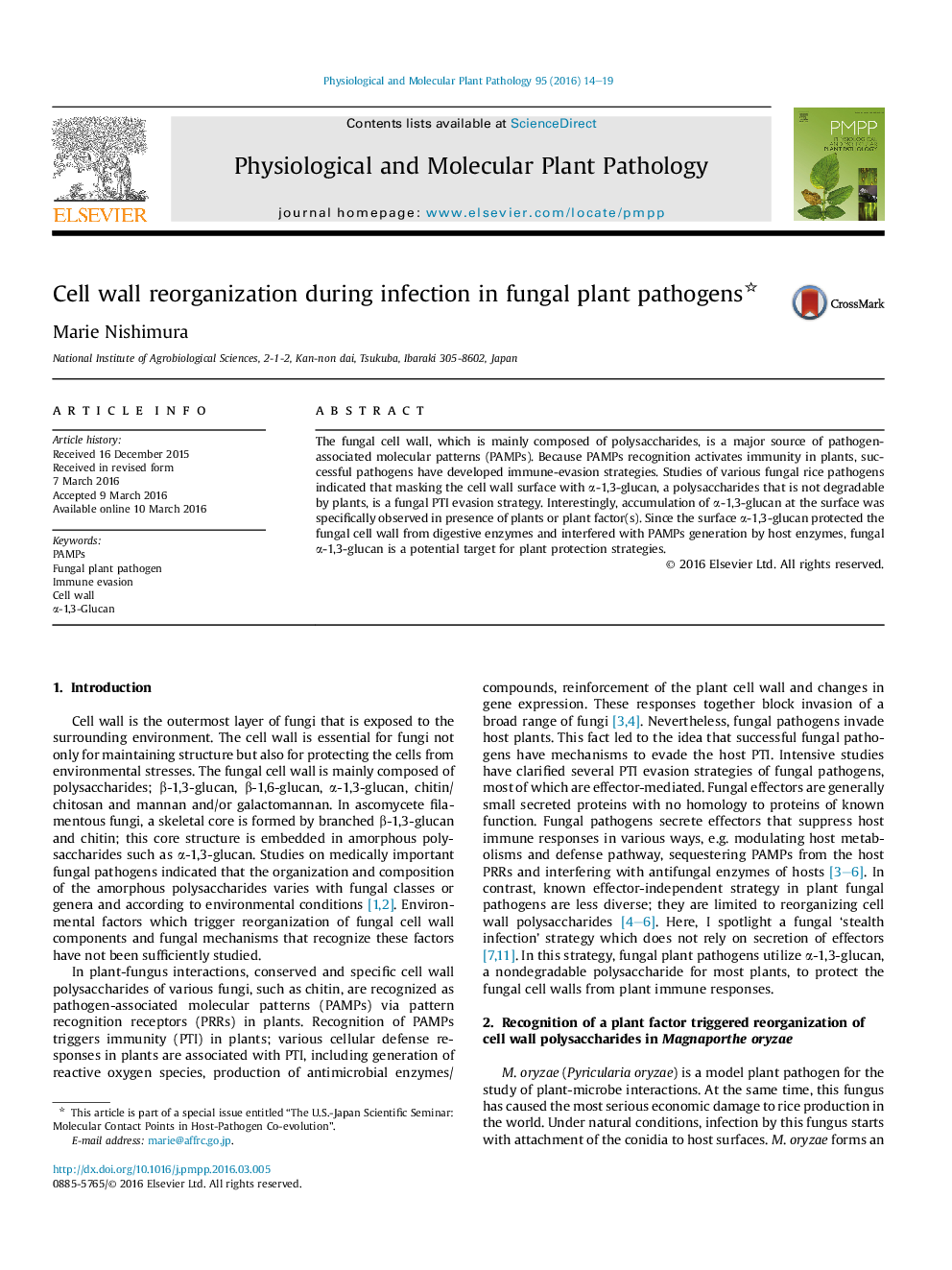| Article ID | Journal | Published Year | Pages | File Type |
|---|---|---|---|---|
| 2836172 | Physiological and Molecular Plant Pathology | 2016 | 6 Pages |
•Fungal plant pathogens dynamically reorganize cell wall components during infection likely in response to plant factors.•The cell wall surface of infectious hyphae was masked with α-1,3-glucan, a nondegradable polysaccharide for plants.•The surface α-1,3-glucan allowed the fungi to evade host immunity via protection of the cell wall during infection.
The fungal cell wall, which is mainly composed of polysaccharides, is a major source of pathogen-associated molecular patterns (PAMPs). Because PAMPs recognition activates immunity in plants, successful pathogens have developed immune-evasion strategies. Studies of various fungal rice pathogens indicated that masking the cell wall surface with α-1,3-glucan, a polysaccharides that is not degradable by plants, is a fungal PTI evasion strategy. Interestingly, accumulation of α-1,3-glucan at the surface was specifically observed in presence of plants or plant factor(s). Since the surface α-1,3-glucan protected the fungal cell wall from digestive enzymes and interfered with PAMPs generation by host enzymes, fungal α-1,3-glucan is a potential target for plant protection strategies.
